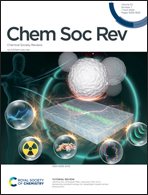Emerging polymeric materials for treatment of oral diseases: design strategy towards a unique oral environment
Abstract
Oral diseases are prevalent but challenging diseases owing to the highly movable and wet, microbial and inflammatory environment. Polymeric materials are regarded as one of the most promising biomaterials due to their good compatibility, facile preparation, and flexible design to obtain multifunctionality. Therefore, a variety of strategies have been employed to develop materials with improved therapeutic efficacy by overcoming physicobiological barriers in oral diseases. In this review, we summarize the design strategies of polymeric biomaterials for the treatment of oral diseases. First, we present the unique oral environment including highly movable and wet, microbial and inflammatory environment, which hinders the effective treatment of oral diseases. Second, a series of strategies for designing polymeric materials towards such a unique oral environment are highlighted. For example, multifunctional polymeric materials are armed with wet-adhesive, antimicrobial, and anti-inflammatory functions through advanced chemistry and nanotechnology to effectively treat oral diseases. These are achieved by designing wet-adhesive polymers modified with hydroxy, amine, quinone, and aldehyde groups to provide strong wet-adhesion through hydrogen and covalent bonding, and electrostatic and hydrophobic interactions, by developing antimicrobial polymers including cationic polymers, antimicrobial peptides, and antibiotic-conjugated polymers, and by synthesizing anti-inflammatory polymers with phenolic hydroxy and cysteine groups that function as immunomodulators and electron donors to reactive oxygen species to reduce inflammation. Third, various delivery systems with strong wet-adhesion and enhanced mucosa and biofilm penetration capabilities, such as nanoparticles, hydrogels, patches, and microneedles, are constructed for delivery of antibiotics, immunomodulators, and antioxidants to achieve therapeutic efficacy. Finally, we provide insights into challenges and future development of polymeric materials for oral diseases with promise for clinical translation.

- This article is part of the themed collection: Celebrating the scientific accomplishments of RSC Fellows


 Please wait while we load your content...
Please wait while we load your content...